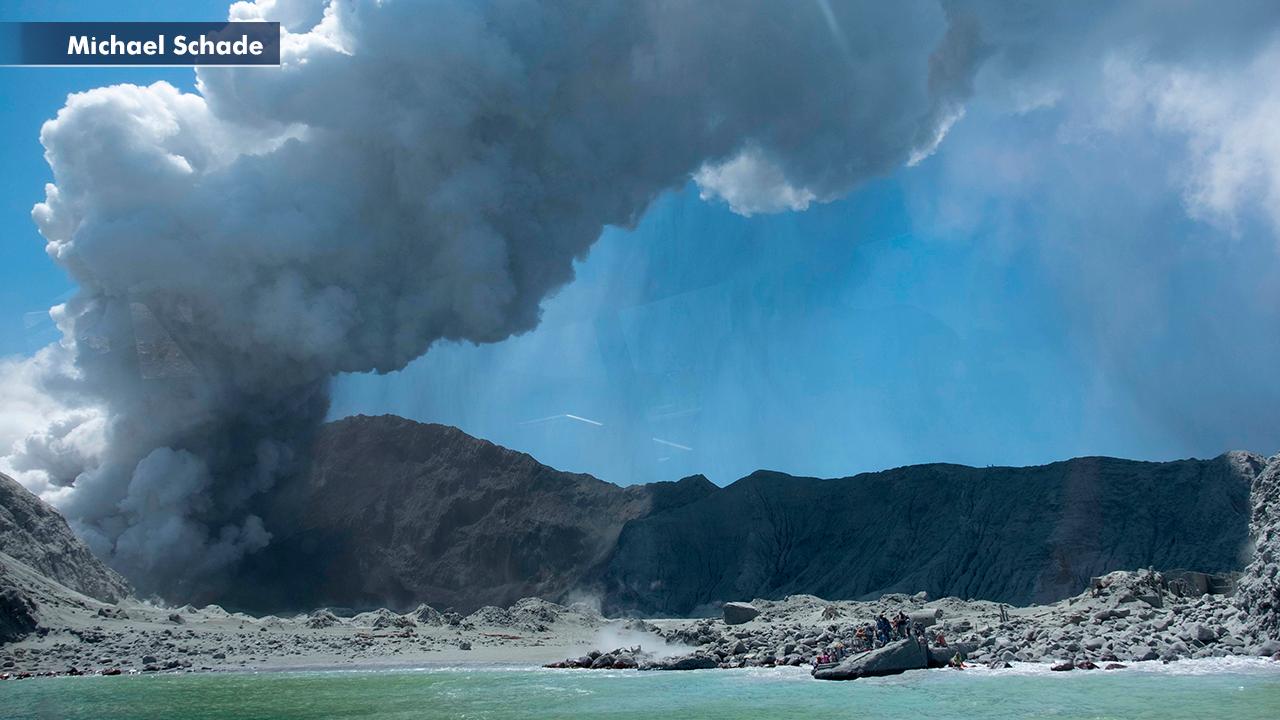New Zealand officials finalize plan to recover victims of volcanic eruption on White Island
Authorities say they're committed to recovering the bodies and returning them to their families.
A daring mission to retrieve the bodies of eight victims of the New Zealand volcano eruption got underway early Friday, even though scientists said they believe there is a risk for another eruption.
New Zealand police said the recovery mission will involve a team of eight military specialists as part of the "high-speed recovery" of the bodies, which Police Deputy Commissioner Mike Clement acknowledged was “not without risk.”
"They will go onto the island and they will make every effort to recover all of the bodies," Clement said at a news conference.
NEW ZEALAND VOLCANO DEAD INCLUDE 2 TEEN BROTHERS FROM CHICAGO AREA; PARENTS STILL MISSING: REPORTS
Clement said early Friday that the location of six of the bodies is already known, but finding the other two may be difficult, according to broadcaster RNZ. Once officials are able to recover the remains, they will be taken to the navy ship Wellington that is waiting close by.
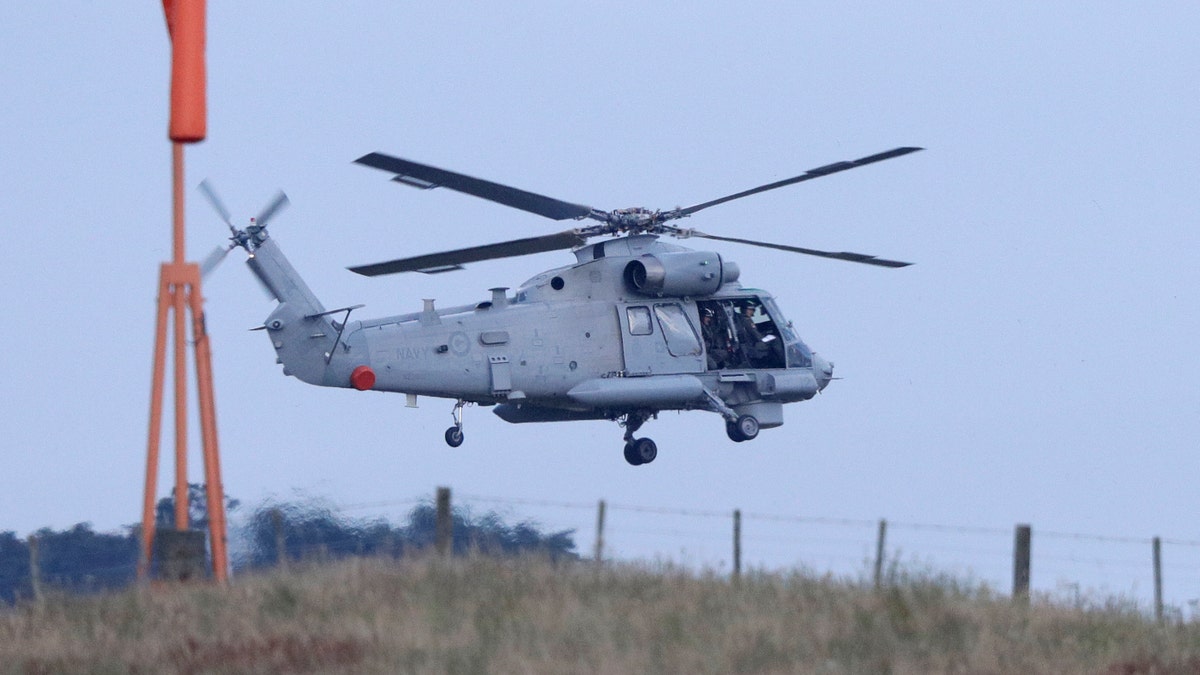
A New Zealand Navy helicopter takes off from Whakatane Airport as the mission to return victims of the White Island eruption begins in Whakatane, New Zealand, Friday, Dec. 13, 2019. (AP Photo/Mark Baker)
The continuing volcanic activity has delayed the recovery of the last victims since Monday's deadly eruption, which occurred as 47 tourists and their guides were exploring the island. In addition to the eight bodies left on the island, eight other people were killed and dozens were severely burned by the blast of scalding steam and ash.
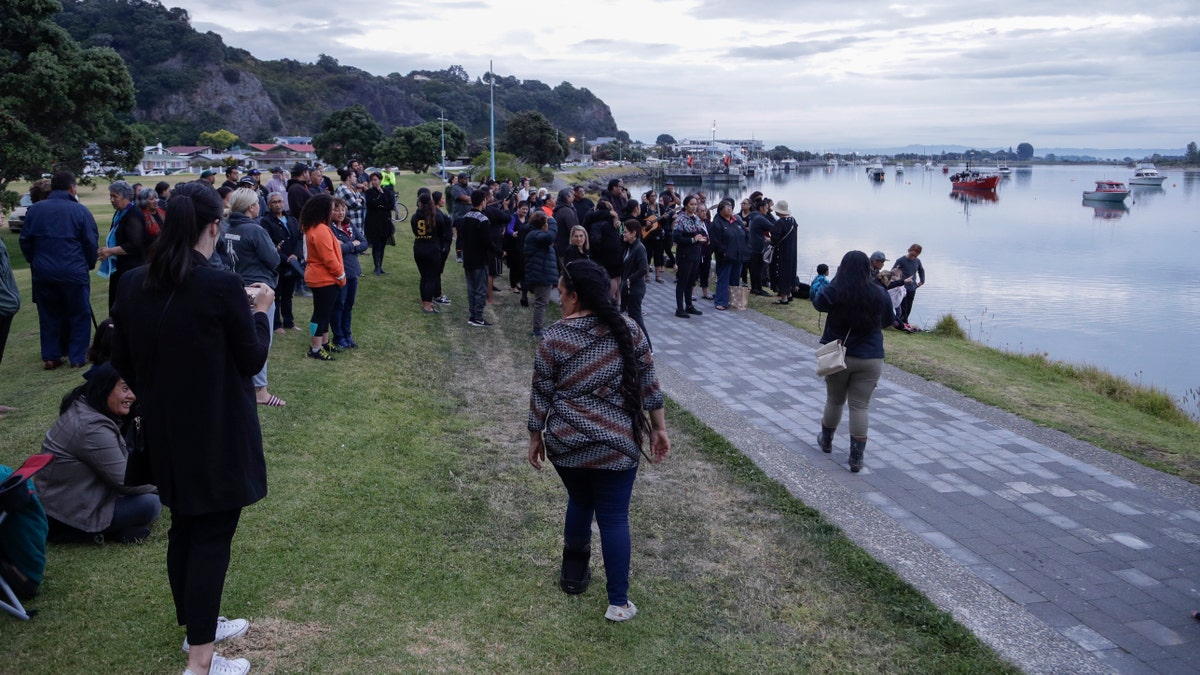
Locals sing during sunrise as they wait for the return of the victims after the White Island eruption to be returned to Whakatane, New Zealand, Friday, Dec. 13, 2019. (AP Photo/Mark Baker)
As the team of military specialists was boarding a helicopter to be sent to the island, locals gathered along the shoreline in Whakatane to sing and pray while awaiting the return of the bodies, according to the New Zealand Herald.
One woman told a reporter from the Herald as a haka was performed: "This is one way we can contribute together for their safe travels and safe return."
Police have cited the need to preserve evidence that would help identify the victims as a reason to take a methodical approach, but the decision to make a faster recovery attempt appeared to have been partly motivated by weather forecasts.
Rain mixing with the heavy volcanic ash lying on the island could encase the bodies in a cement-like substance, making recovery more difficult.

Plumes of steam rise above White Island off the coast of Whakatane, New Zealand, Wednesday, Dec. 11, 2019. (AP Photo/Mark Baker)
"A lot has to go right for us tomorrow to make this work," police said Thursday.
Before the mission got underway, GeoNet, New Zealand's geological hazard information site, said Thursday there was a 50 to 60 percent chance of another eruption within the next 24 hours.
The seismic monitoring agency has maintained the island's volcanic alert level at 2, noting there's been no eruption since Monday. On the scale, 2 signifies unrest while 5 signifies a major eruption.
Volcanologist Nico Fournier warned earlier that White Island remained “highly volatile" after Monday's blast. White Island is the tip of a mostly undersea volcano that's about 30 miles off New Zealand's North Island and has been visited by thousands of tourists each year. It's also the country's most active cone volcano.
CLICK HERE FOR THE FOX NEWS APP
As the recovery operation gets underway, New Zealand medical staff were working around the clock to treat the injured survivors in hospital burn units.
On Thursday, a tourist injured in the eruption was transported to an Australian Air Force plane in Hamilton, New Zealand to be taken elsewhere for additional treatment.
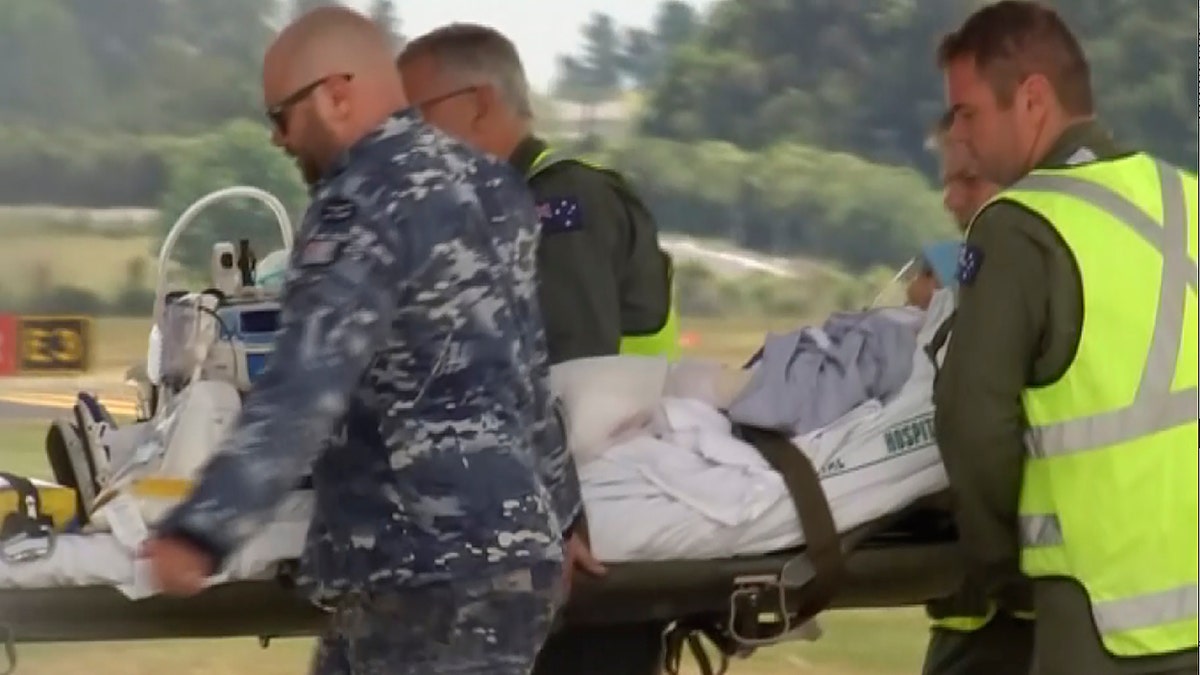
An injured tourist in the volcano eruption is carried to an Australian Air Force plane in Hamilton, New Zealand, Thursday, Dec. 12, 2019. N Australian Broadcasting Corporation via AP (Australian Broadcasting Corporation via AP)
The enormity of the task was clear when Dr. Peter Watson, a chief medical officer, said at a news conference that extra skin has been ordered from American skin banks. Hospital personnel anticipated needing an extra 1,300 square feet of skin for grafting onto the patients, Watson said.
Australian tissue banks have sent 21 square feet to New Zealand to help the survivors.
“Skin is predominantly used in patients who have the most life-threatening burns, usually if they have more than 50% burn over their body,” said Stefan Poniatowski, head of Donor Tissue Bank Victoria.
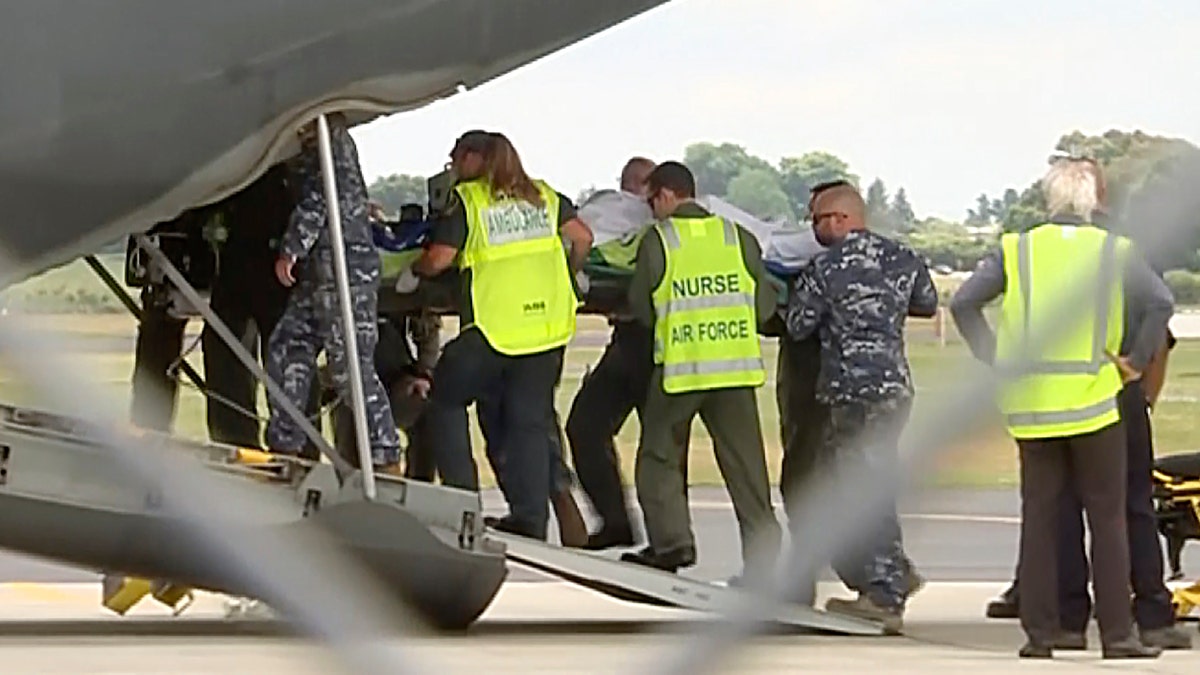
New Zealand medical staff are still working around the clock to treat the injured survivors in hospital burn units. (Australian Broadcasting Corporation via AP)
A patient with that amount of burned skin doesn't have enough of their own healthy skin to transplant onto the wounded area, he explained. Additionally, in patients with an infection, creating a new wound to transfer their own skin is too risky, Poniatowski said.
Authorities say 24 Australians, nine Americans, five New Zealanders, four Germans, two Britons, two Chinese and a Malaysian were visiting the island at the time of the eruption. Many were from a Royal Caribbean cruise ship that had left Sydney two days earlier.
Fox News' Stephen Sorace and The Associated Press contributed to this report.

